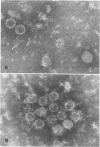Abstract
SA12 virus, originally isolated from an uninoculated South African vervet monkey kidney culture, was identified as a new member of the simian virus 40 (SV40)-polyoma subgroup of papovaviruses. The virus produced a cytopathic effect with nuclear enlargement in primary rhesus kidney cells. The virion had papovavirus morphology and a diameter of 44 to 45 nm. The DNA of the virus was a circular, double-stranded, superhelical molecule with a mean length 101% that of SV40 DNA and an estimated molecular weight of 3.3 X 10(6). The virus was found to be unrelated to other papovaviruses by neutralization, immune electron microscopy, and immunofluorescence tests with antiviral sera. SA12 virus-infected cells exhibited a capsid antigen, which has recently been found to be common to viruses of the SV40-polyoma subgroup. The virus readily transformed kideny cells from 10-day-old hamsters. Inoculation of transformed cells produced tumors in 3- to 4-week-old hamsters. The T antigens of SA12 and SV40 viruses were strongly and reciprocally cross-reactive. A high proportion of the sera of chacma baboons, Papio ursinus, and a comparatively lower proportion of the sera of vervet monkeys, Cercopithecus pygerythrus, had neutralizing antibodies to SA12 virus
Full text
PDF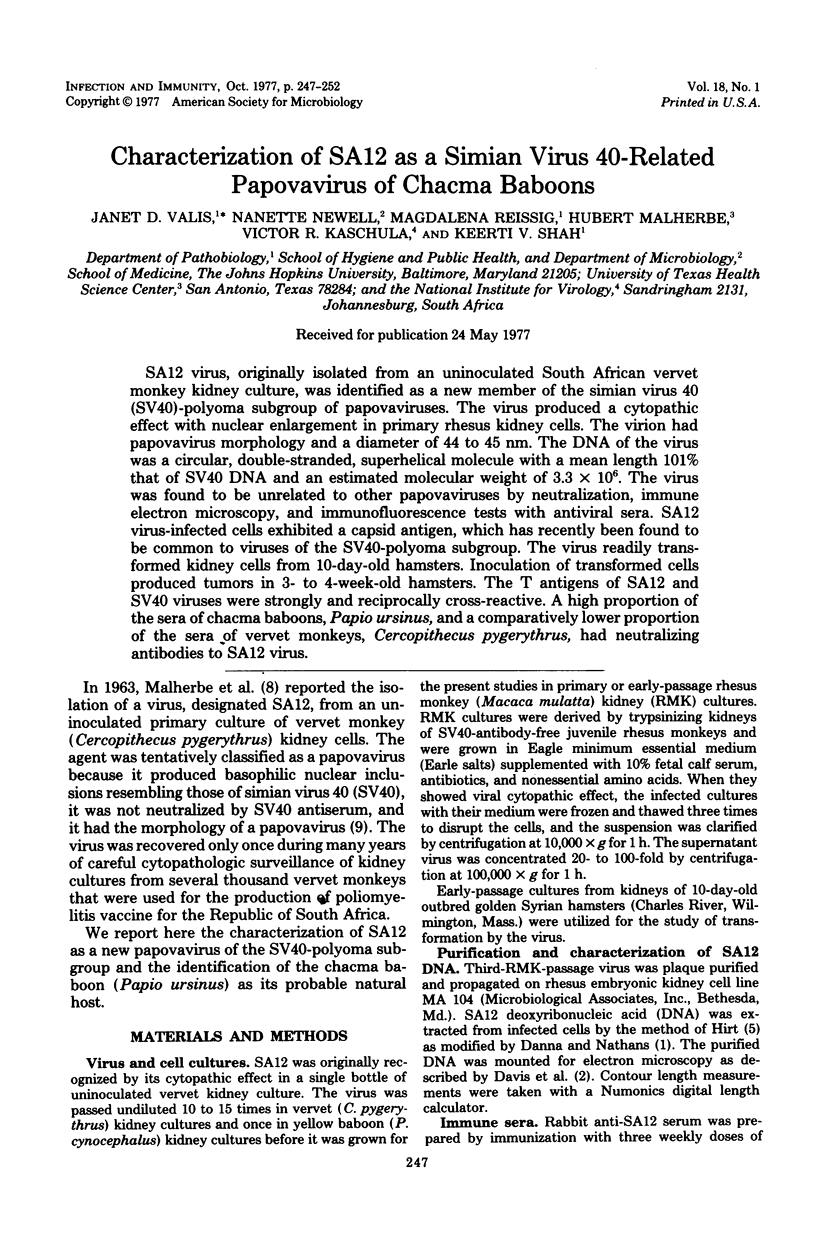
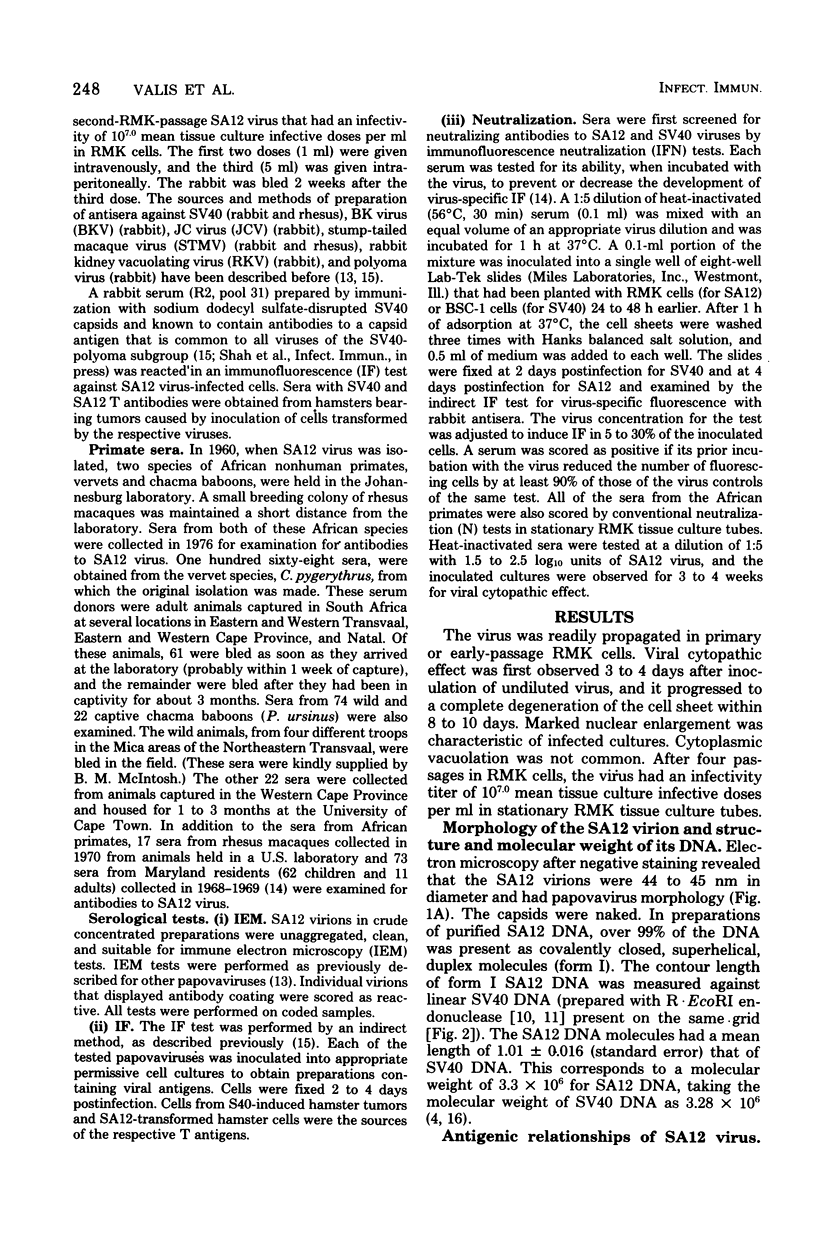
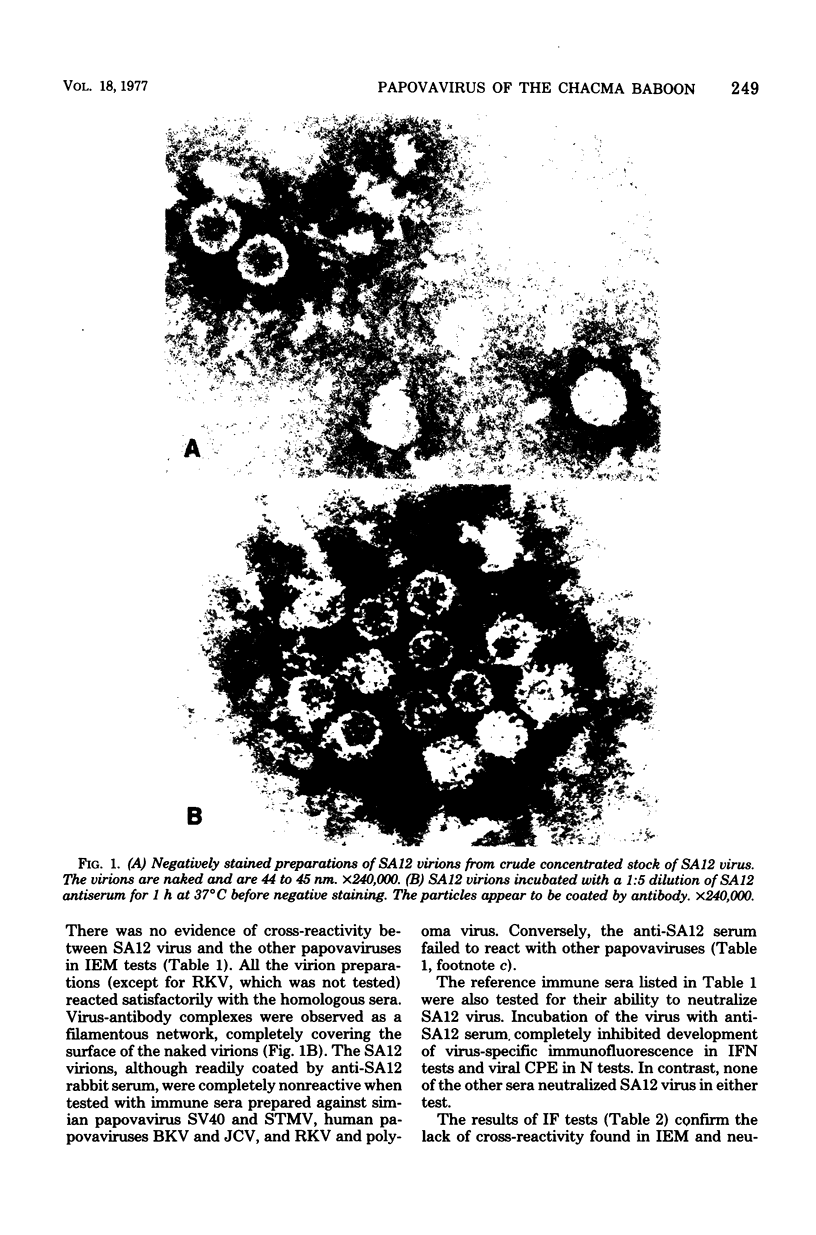
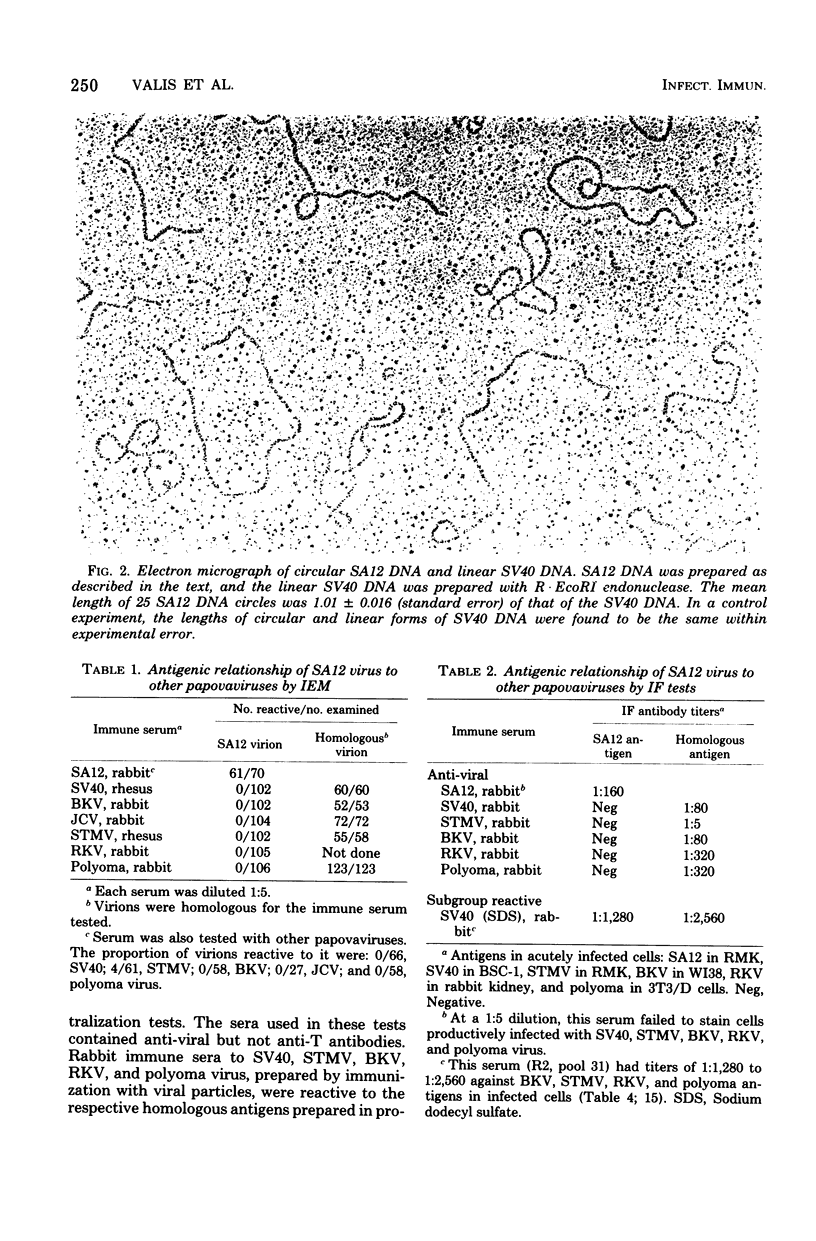
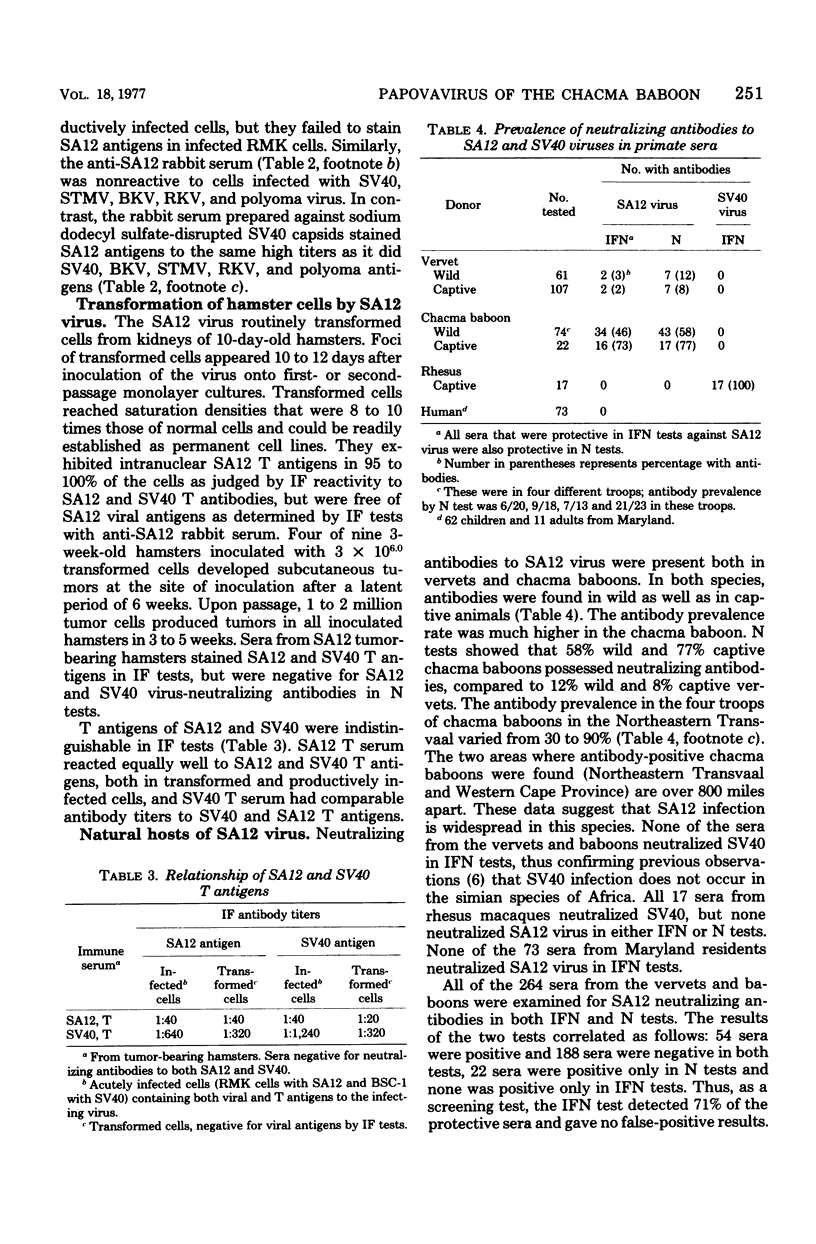
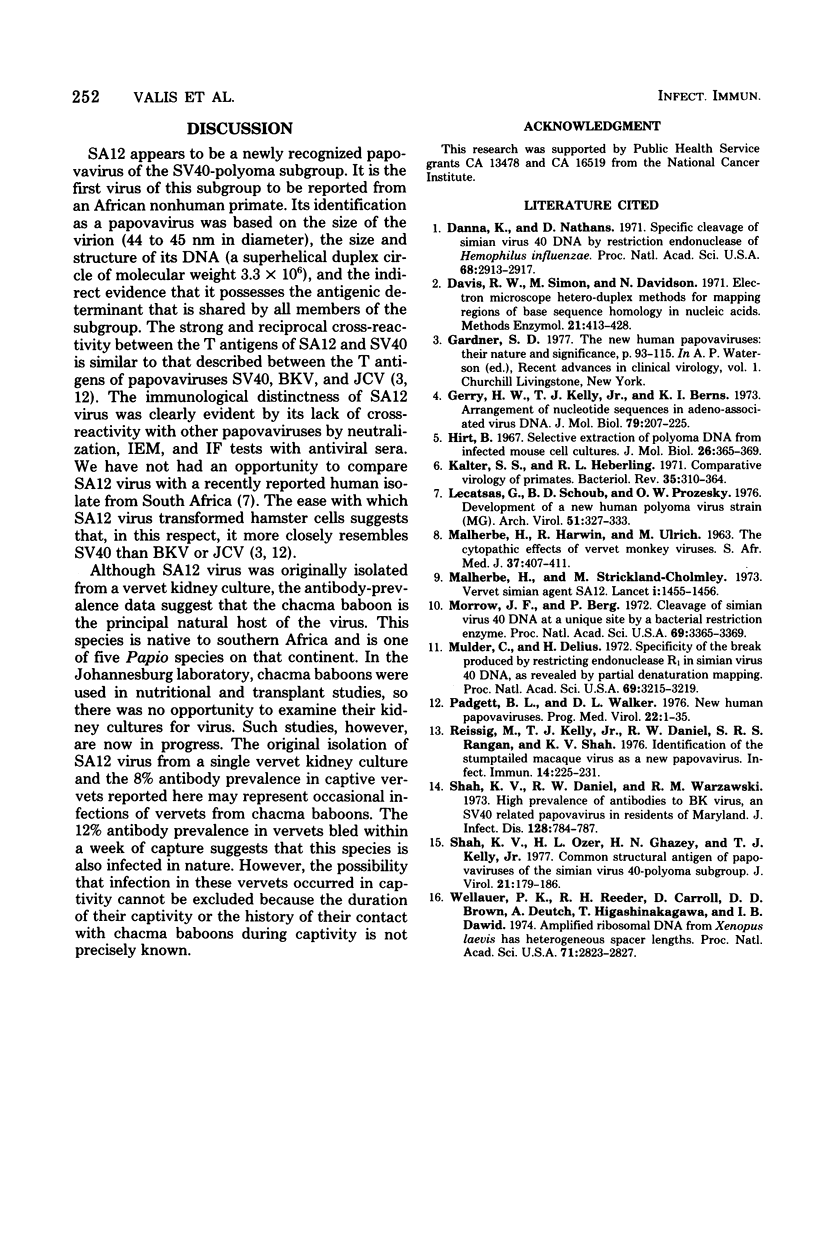
Images in this article
Selected References
These references are in PubMed. This may not be the complete list of references from this article.
- Danna K., Nathans D. Specific cleavage of simian virus 40 DNA by restriction endonuclease of Hemophilus influenzae. Proc Natl Acad Sci U S A. 1971 Dec;68(12):2913–2917. doi: 10.1073/pnas.68.12.2913. [DOI] [PMC free article] [PubMed] [Google Scholar]
- Gerry H. W., Kelly T. J., Jr, Berns K. I. Arrangement of nucleotide sequences in adeno-associated virus DNA. J Mol Biol. 1973 Sep 15;79(2):207–225. doi: 10.1016/0022-2836(73)90001-6. [DOI] [PubMed] [Google Scholar]
- Hirt B. Selective extraction of polyoma DNA from infected mouse cell cultures. J Mol Biol. 1967 Jun 14;26(2):365–369. doi: 10.1016/0022-2836(67)90307-5. [DOI] [PubMed] [Google Scholar]
- Kalter S. S., Heberling R. L. Comparative virology of primates. Bacteriol Rev. 1971 Sep;35(3):310–364. doi: 10.1128/br.35.3.310-364.1971. [DOI] [PMC free article] [PubMed] [Google Scholar]
- Lecatsas G., Schoub B. D., Prozesky O. W. Development of a new human polyoma virus strain (MG). Arch Virol. 1976;51(4):327–333. doi: 10.1007/BF01317936. [DOI] [PubMed] [Google Scholar]
- MALHERBE H., HARWIN R. The cytopathic effects of vervet monkey viruses. S Afr Med J. 1963 Apr 20;37:407–411. [PubMed] [Google Scholar]
- Morrow J. F., Berg P. Cleavage of Simian virus 40 DNA at a unique site by a bacterial restriction enzyme. Proc Natl Acad Sci U S A. 1972 Nov;69(11):3365–3369. doi: 10.1073/pnas.69.11.3365. [DOI] [PMC free article] [PubMed] [Google Scholar]
- Mulder C., Delius H. Specificity of the break produced by restricting endonuclease R 1 in Simian virus 40 DNA, as revealed by partial denaturation mapping. Proc Natl Acad Sci U S A. 1972 Nov;69(11):3215–3219. doi: 10.1073/pnas.69.11.3215. [DOI] [PMC free article] [PubMed] [Google Scholar]
- Padgett B. L., Walker D. L. New human papovaviruses. Prog Med Virol. 1976;22:1–35. [PubMed] [Google Scholar]
- Reissig M., Kelly T. J., Jr, Daniel R. W., Rangan S. R., Shah K. V. Identification of the stumptailed macaque virus as a new papovavirus. Infect Immun. 1976 Jul;14(1):225–231. doi: 10.1128/iai.14.1.225-231.1976. [DOI] [PMC free article] [PubMed] [Google Scholar]
- Shah K. V., Daniel R. W., Warszawski R. M. High prevalence of antibodies to BK virus, an SV40-related papovavirus, in residents of Maryland. J Infect Dis. 1973 Dec;128(6):784–787. doi: 10.1093/infdis/128.6.784. [DOI] [PubMed] [Google Scholar]
- Shah K. V., Ozer H. L., Ghazey H. N., Kelly T. J., Jr Common structural antigen of papovaviruses of the simian virus 40-polyoma subgroup. J Virol. 1977 Jan;21(1):179–186. doi: 10.1128/jvi.21.1.179-186.1977. [DOI] [PMC free article] [PubMed] [Google Scholar]
- Wellauer P. K., Reeder R. H., Carroll D., Brown D. D., Deutch A., Higashinakagawa T., Dawid I. B. Amplified ribosomal DNA from Xenopus laevis has heterogeneous spacer lengths. Proc Natl Acad Sci U S A. 1974 Jul;71(7):2823–2827. doi: 10.1073/pnas.71.7.2823. [DOI] [PMC free article] [PubMed] [Google Scholar]



